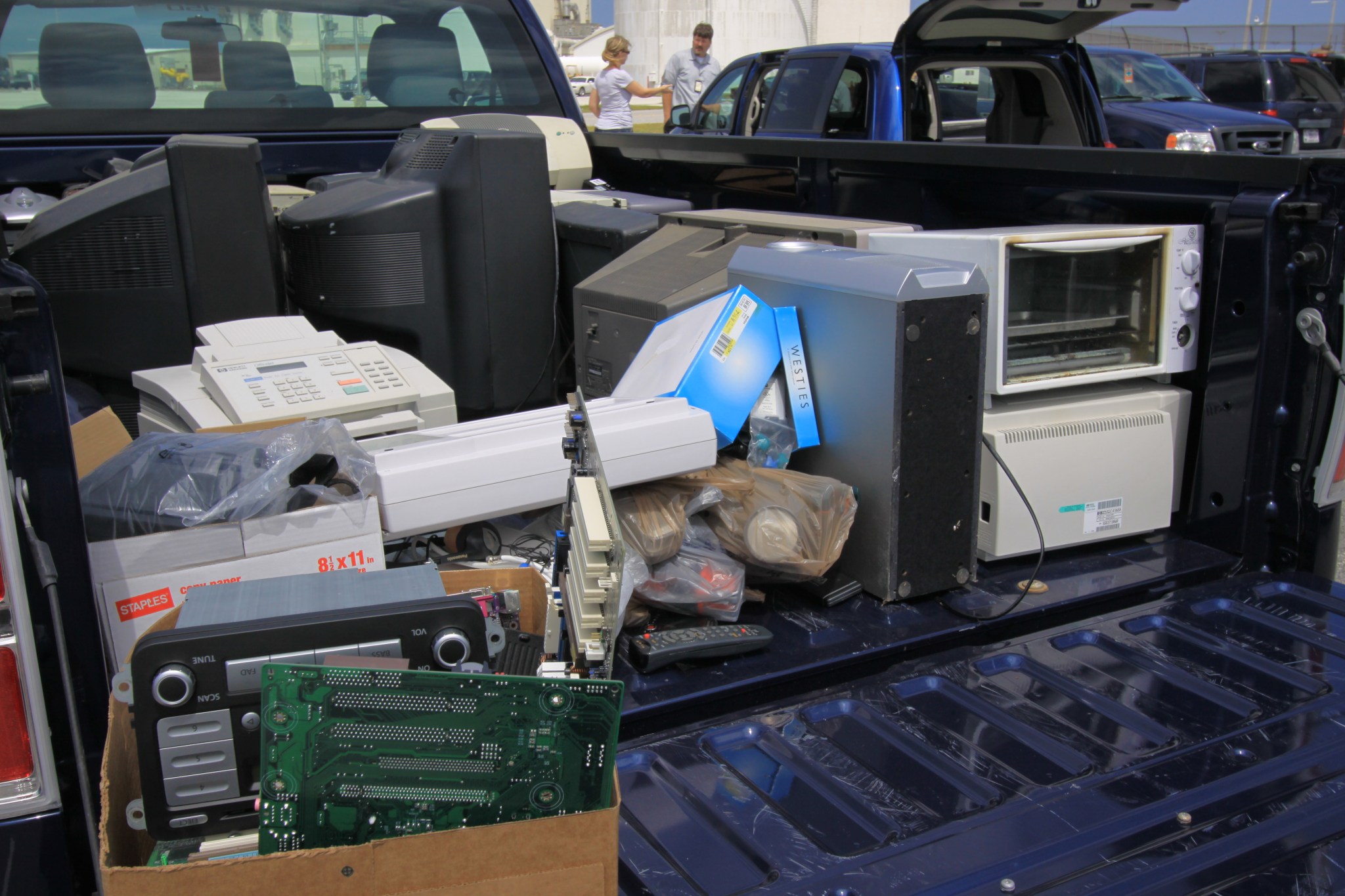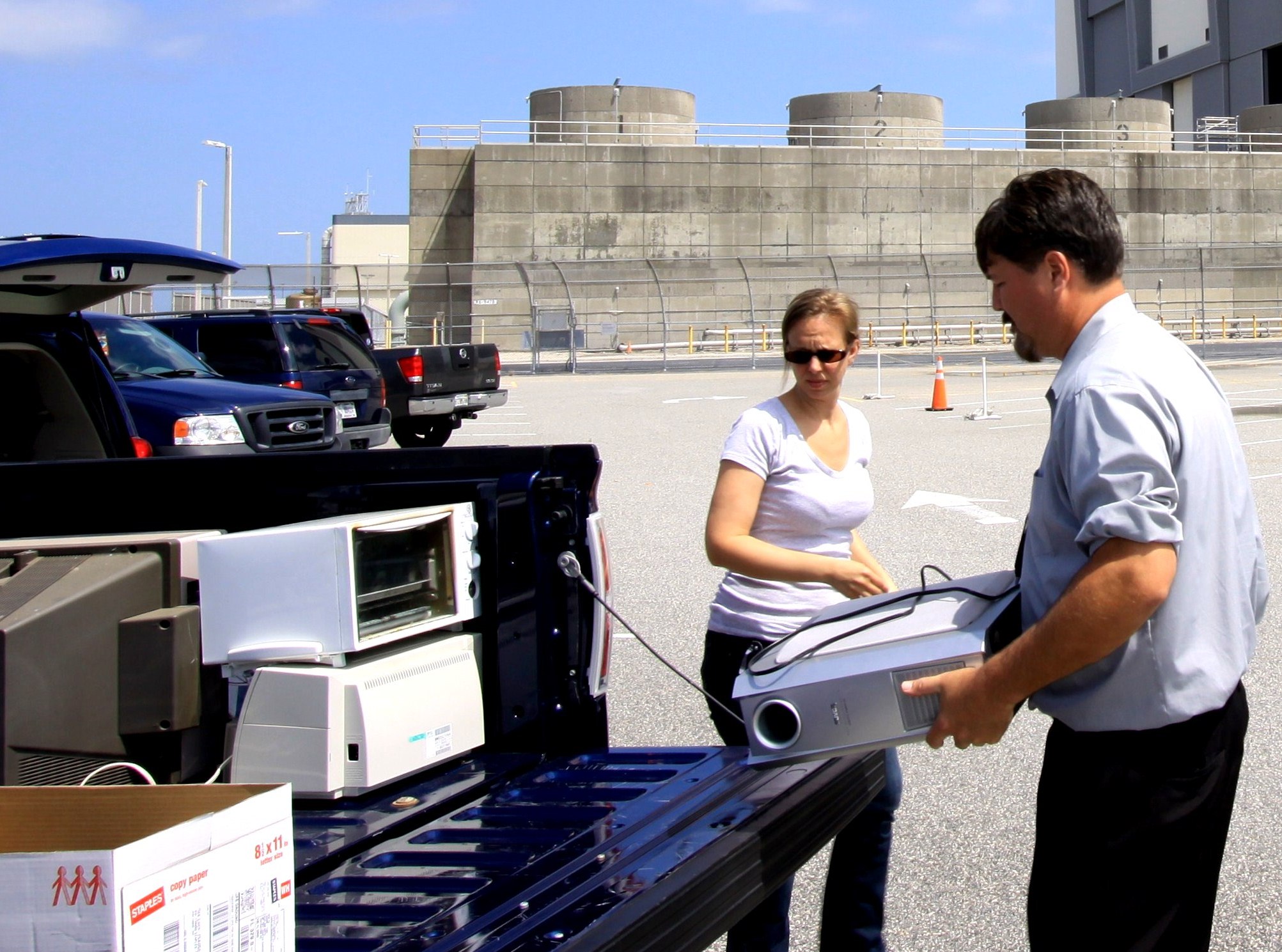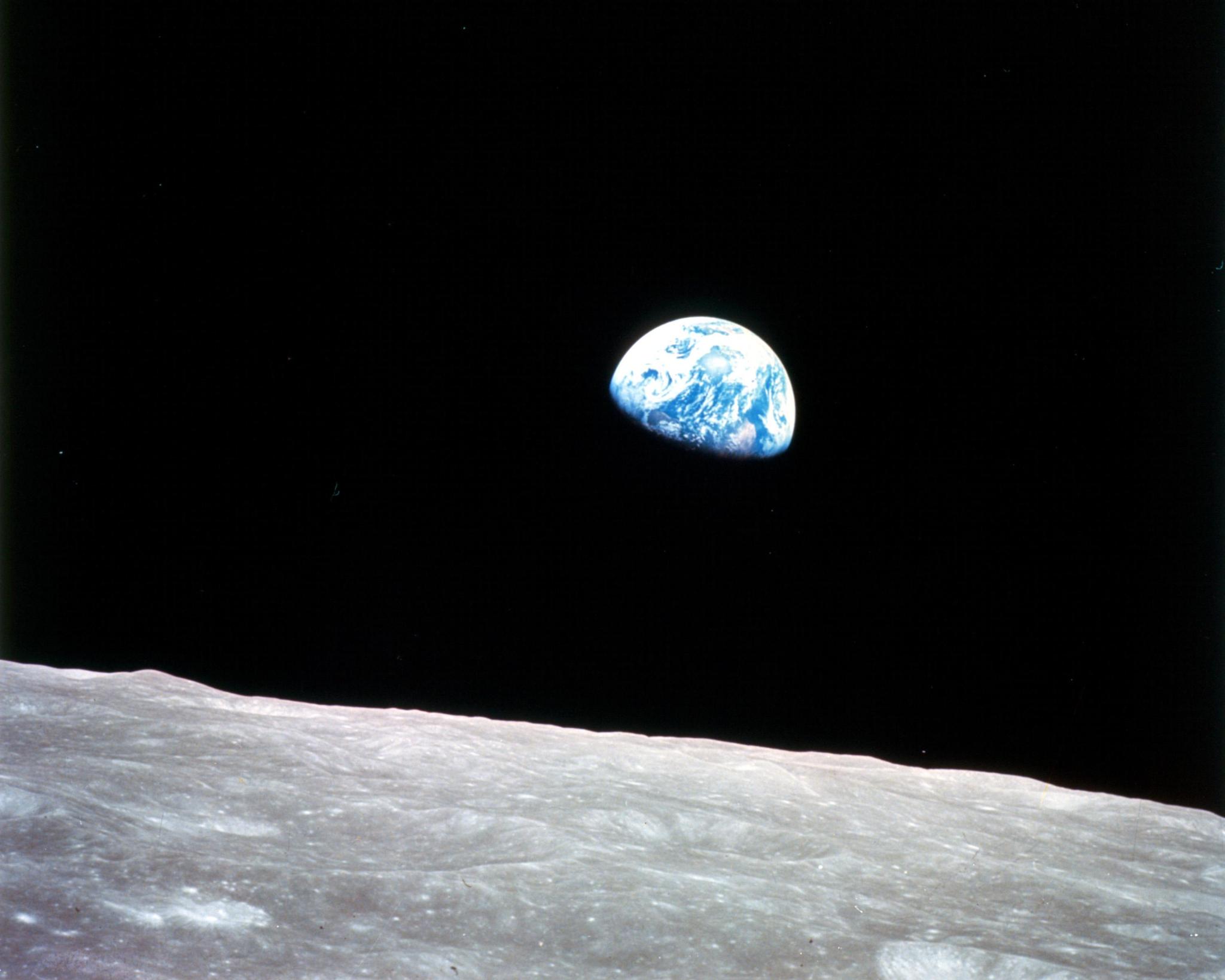On their way to the moon in December 1968, the crew members of Apollo 8 became the first humans to leave low-Earth orbit. They brought back the first, complete “blue ball” images of their home planet, which many believe helped spark the environmental movement in the early 1970s. One element of that effort is to recycle items that would, otherwise, become polluting trash.
No photograph from Apollo 8 is more recognized than the Earthrise image taken by astronaut Bill Anders as the crew came around the moon immediately after entering lunar orbit. Renowned nature photographer Galen Rowell called it “the most influential environmental photograph ever taken.”
Apollo 8 astronaut Jim Lovell put the view in simple perspective.
“The Earth, from here, is a ‘grand oasis” in the big vastness of space,” he said.
A little more than a year after the historic mission, the first Earth Day took place in the United States — April 22, 1970. Growing out of that movement was an increased emphasis on the need to recycle. That effort is of growing importance with the ever-increasing amounts of obsolete electronic trash, or e-waste.
At NASA’s Kennedy Space Center in Florida, employees are doing their part to recycle electronic gadgets that are becoming important parts of everyday life.
“We’ve been providing opportunities for Kennedy people to turn in old electronic products since 2007,” said Frank Kline, Sustainability Group lead within the Environmental Management Branch of Center Operations. “It’s been well received and we collect quite a bit each time.”
On Earth Day, April 22, and the day after, Kennedy employees were given another opportunity to turn in electronic products no longer needed at home.
“We received items such as TVs, computers, VCRs, microwaves and cell phones,” Kline said as employees drove up to drop off items in the parking lot at the Vehicle Assembly Building (VAB) on April 23. During the two-day recycle opportunity, “more than 75 employees utilized this event to drop off items. All totaled, Kennedy collected approximately 6,000 pounds of electronics.”
According to the Consumer Electronics Association, Americans own, on average, 24 electronic products per household. The use of electronic products has grown substantially during the past two decades, changing the way and the speed in which communications, information and entertainment are received.
“As electronics fail or become obsolete, this stuff needs to be recycled or it winds up being buried in a land fill,” Kline said. “In addition to the plastic and glass that is easy to see, many of these products contain lead, gold, lithium, you name it. As the stuff sits in the ground, the chemicals get into the water supply and we may wind up drinking it.”
While some products are toxic, electronic products are also made from valuable resources and materials, including metals, plastics, and glass, all of which require energy to mine or manufacture.
“As the products are crushed, the individual components are separated for reuse,” said Kline. “Items such as gold and lead have value and make it economical to recycle. With the cost of land, it’s more expensive to bury this stuff. It makes more sense to recycle than to fill up valuable real estate with a garbage dump.”

Donating or recycling consumer electronics also conserves natural resources and avoids air and water pollution, as well as greenhouse gas emissions that are caused by manufacturing new materials. The Environmental Protection Agency reports that recycling one million laptops saves the energy equivalent to the electricity used by more than 3,500 U.S. homes in a year. For every million cell phones recycled, 35,000 pounds of copper, 772 pounds of silver, 75 pounds of gold and 33 pounds of palladium can be recovered.
Kline expressed appreciation to the volunteers who supported the recycling event in the Kennedy Industrial area and VAB parking lot: Hien Nguyen and Cory Taylor of the NASA Environmental Management Branch, Michael Barth, and Marvin Oyola of NASA Construction of Facilities, Shawn Fisher, Ralph Nolte and Michael Omans of URS Federal Technical Services, Amy Mangiacapra of Jacobs Technology, and Rick Wood of Delaware North at the Kennedy Visitor Complex.
Kline noted that the next opportunity for Kennedy employees to drop off no-longer-needed electronics will be in November later this year.





























